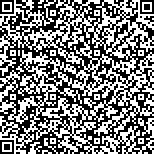| 引用本文: | 王珑,何英彬,尤飞,韩盛楠,王向一,陈慧聪,王用业,焦宜帆,宁炯,冯安然.作物种植适宜性评价尺度及评价方法分析[J].中国农业资源与区划,2024,45(9):214~221 |
| |
|
| 摘要: |
| 目的 通过对作物种植适宜性研究领域的动态分析,为作物种植适宜性领域研究方向与趋势提供基础信息与借鉴。方法 文章基于文献查阅研究方法,通过文献梳理、研究与分析,获取作物种植适宜性领域研究趋势,对作物种植适宜性领域相关研究进行了总结。结果 (1)作物种植适宜性研究领域大致可以分为作物种植适宜性评价时空尺度、作物种植适宜性研究方法、作物种植适宜性研究中的敏感性与不确定性分析及结果验证几个方面。(2)尺度研究方面:作物种植适宜性研究对象呈现逐步细化的趋势,由土地类型层面逐步细化为作物种类层面,甚至作物品种层面;评价的时空单元逐步细化,空间单元格由几十千米、几千米细化为几十米,时间评价尺度由生长期、月份细化为天甚至小时。(3)作物种植适宜性研究方法方面:作物种植适宜性评价指标日益丰富,评价方法逐步由线性方法发展为非线性方法,其中人工智能等方法成为研究的新热点和方向。结论 作物种植适宜性分析需要进一步细化至品种级别,品种的辨别标识是深入研究作物种植适宜性的阻碍,作物适宜品种与地理因子的匹配关系需要挖掘,研究导致作物种植适宜度值空间差异性的主要因子即影响因子敏感性分析有助于了解适宜性空间差异产生的原因,对于人工改善作物种植环境具有理论和实践指导意义。 |
| 关键词: 作物种植适宜性 尺度问题 线性与非线性方法 敏感性与不确定性分析 作物品种 |
| DOI:10.7621/cjarrp.1005-9121.20240921 |
| 分类号:S157 |
| 基金项目:国家重点研发计划“黑土地保护与利用科技创新”重点专项“黑土区农作物种植制度演替对土壤质量影响及其优化”(2023YFD1500201-3);中央级公益性科研院所基本科研业务费专项资金(1610132023004);国家自然科学基金项目“基于动态过程导向的马铃薯种植适宜性时空精细化评价研究”(41771562);中国农业科学院科技创新工程(GJ2023-18-2) |
|
| ANALYSIS ON EVALUATION SCALE AND METHOD OF CROP PLANTING SUITABILITY |
|
Wang Long1,2, He Yingbin1,2,3, You Fei1,2, Han Shengnan4, Wang Xiangyi1,2, Chen Huicong5, Wang Yongye1,2, Jiao Yifan1,2, Ning Jiong5, Feng Anran5
|
|
1.State Key Laboratory of Efficient Utilization of Arid and Semi-arid Arable Land in Northern China, Beijing100081, China;2.Institute of Agricultural Resources and Regional Planning, Chinese Academy of Agricultural Sciences, Beijing100081, China;3.Collaborative Innovation Center on Forecast and Evaluation of Meteorological Disasters, Nanjing University of Information Science & Technology, Nanjing210044, Jiangsu, China;4.Institute of Agricultural Information, Chinese Academy of Agricultural Sciences, Beijing100081, China;5.School of Environmental Science and Engineering, Tiangong University, Tianjin300387, China
|
| Abstract: |
| To provide basic information and reference for the research direction and trend of crop planting suitability through dynamic analysis. Based on the literature review research method, this paper obtained the research trends in the field of crop planting suitability through literature review, research and analysis, and summarized the related research in the field of crop planting suitability. The results showed that: (1) The research fields of crop planting suitability could be roughly divided into the spatio-temporal scale of crop planting suitability evaluation, crop planting suitability research methods, sensitivity and uncertainty analysis in crop planting suitability research and result verification. (2) In terms of scale research, the research objects of crop planting suitability showed a trend of gradual refinement, from the land type level to the crop type level, and even the crop variety level; the space-time units of evaluation were gradually refined, the space cells were refined from tens of kilometers and thousands of meters to tens of meters, and the time evaluation scale was refined from growth periods and months to days and even hours. (3) Crop planting suitability research methods: Crop planting suitability evaluation indicators were increasingly abundant, and evaluation methods were gradually developed from linear methods to nonlinear methods, among which artificial intelligence and other methods became new research hotspots and directions. Therefore, conclusion crop planting suitability analysis needs to be further refined to the variety level, and the identification of varieties is an obstacle to in-depth research on crop planting suitability. The matching relationship between crop suitable varieties and geographical factors needs to be explored. The research on the main factors leading to the spatial differences of crop planting suitability values, namely the sensitivity analysis of influencing factors, is helpful to understand the causes of spatial differences of suitability. It has theoretical and practical significance for improving crop planting environment artificially. |
| Key words: crop planting suitability scaling problems linear and nonlinear methods sensitivity and uncertainty analysis crop varieties |

